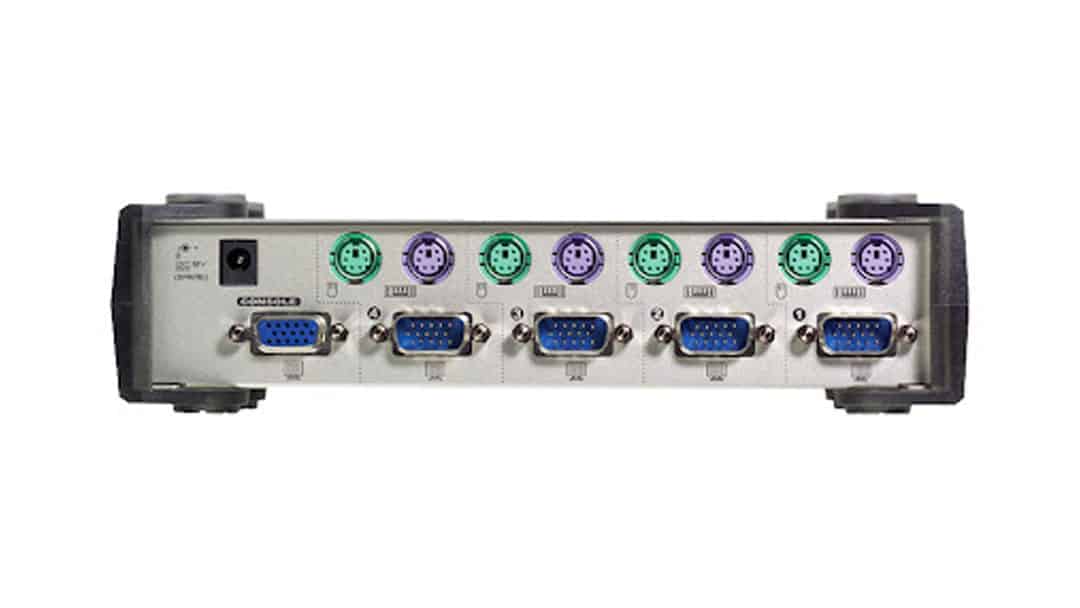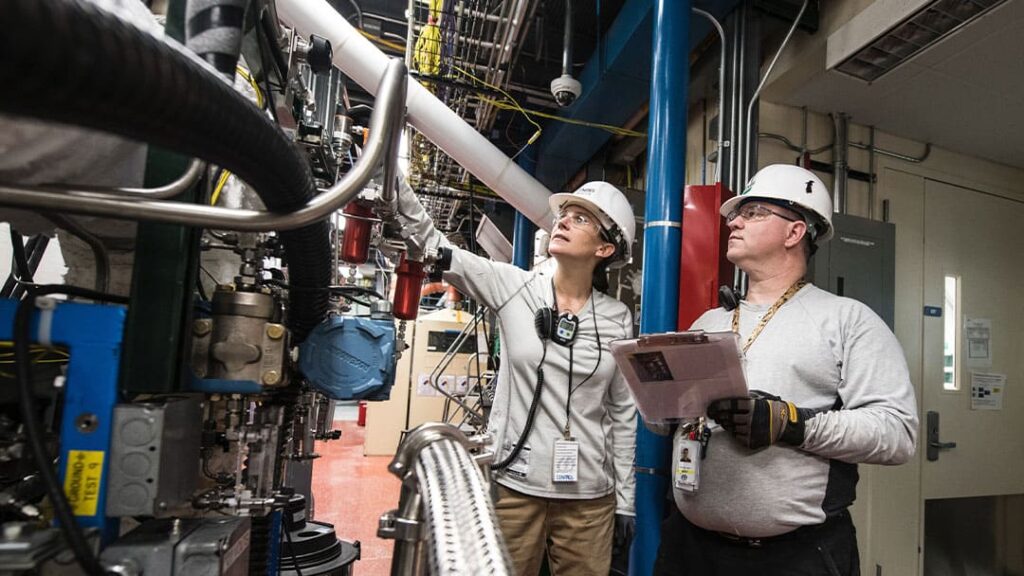A Keyboard-Video-Mouse (KVM) switch allows users to access and control more than one computer with a single keyboard, mouse, and user station. The benefits of one user managing hundreds or potentially thousands of computers and servers from a single user station are apparent, but selecting the best switch to acquire can be less so. Read ahead as we break down the four categories of KVM Switches and discuss several factors to consider when deciding which switch to purchase.
What Are The 4 Categories of KVM Switch?
A KVM switch includes a video switch that syncs pulses between monitors and computers and a data switch that sends and receives data from input devices like keyboards and mice. Several varieties of KVM switches exist to meet users’ various needs and are broken down into the following 4 categories.
Related: Data Center Infrastructure Management | DCIM Software
Enumerated KVM Switch
Also called a hub-based USB KVM switch, the enumerated KVM switch undergoes USB enumeration every time the user switches to a new system or port. Each time, you have to follow an initiation process similar to plugging and unplugging a USB device. These are typically used for home office installations and allow a single user to control multiple computers from one console.
Multi-User KVM Switch
This system assigns dedicated USB ports to a unique set of keyboards and mouse-switching controls. The technology requires several users to manage a large number of data servers and computers. Large installations require multi-user KVM switches, which can allow about 12-16 users to access 64 servers. The KVM switches use emulations to support the basic features of the keyboard and mouse.
Analog KVM Switch
These switches support varied platforms operated through a direct cable connection between the computer and the console that passes through the switch. The analog switch includes advanced features like virtual media and controls access to server platforms and devices by a single user. Depending on the user’s required bandwidth, these switches can affect cost and quality while allowing resolutions at 60 Hz.
Digital KVM Switch
Digital KVM Switches control servers from various IP connections located in remote locations. An administrator has direct control over company LAN and computers directly connected to the KVM switch. The user, however, does not need to be directly in touch with the switch. The KVM switch allows users to control multiple servers through a TCIP/IP network.
Want to stay up to date on all the latest happenings in Data Center operations technology and development? C&C Technology keeps you in the know. Click here to read the latest and greatest!
10 Things to Consider When Buying a KVM Switch
Understanding the different categories for KVM switches is just the start. Here’s what you need to factor in when deciding which switch to buy.
Number of Sources
The number of KVM Ports determines the number of source computers, servers, and other devices you can connect to and subsequently access from a KVM Switch.
Number of Users
When choosing a KVM Switch, consider the number of users you need capable of accessing the KVM Switch at the same time. Multi-user KVM switches can allow anywhere from 4 to hundreds of administrators to control multiple servers and systems. Multi-user KVMs also allow you to store different user profiles with individual access rights.
Media Type
KVM Switches support a variety of Digital and Analog video connections. Some KVM switches offer support for multiple types of connections – like VGA, DVI, HDMI, or DP – simultaneously, while switches may only support one type of video connection.
Related: Data Center Infrastructure: What You Need to Know
Single or Multi-Monitor
KVM Switches come in Single or Multi-monitor configurations. Users can control and switch between Single, Dual, Triple, or Quad-monitor sources. Note, this can be expanded even further on some KVM switches that support cascading or multiple source groupings. Alternatively, you can view various sources with one monitor using a MultiViewer KVM Switch.
Resolution and Performance
Resolutions can vary significantly by the device. Some KVM switches provide up to 4K UHD at 60hz. If you have high-resolution requirements, consider an analog switch that can provide a higher resolution than most digital switches.
Bandwidth
Bandwidth capabilities can vary significantly depending on the graphic requirements of the application being used. Most compression technologies use differentials, sending only changes that appear on the screen to update the user’s screen.
Security & Authentication
IP devices typically allow an administrator to leverage existing authentication models. NIAP-Certified Secure KVM Switches are available for highly secure, classified government and corporate applications.
Distance Requirements
CatX KVM Switches allow users to be located further apart than they would normally be using standard cables. Cat5 switches can also scale larger on both the user and system sides, providing additional design flexibility for future growth. KVM-over-IP allows users to access servers from unlimited distances.
Digital vs. Front-End IP
KVM-over-IP provides remote access to your sources from anywhere in the world with an internet connection. A digital implementation uses a digital keyboard, video, and mouse switches. This allows administrators to gain access to the attached servers through the networked switch. Front-end IP products permit remote users to access an existing analog switch and attached servers.
Remote Power Management Integration
When integrating a Remote Reboot device, administrators can cycle power to a server from a user station anywhere. Integrated power management allows users to control keyboard, video, and mouse switching as well as remote reboots from the same user interface.
Related: Data Center Power: Best Guide to Efficient Power Management
Knowledge is Power
Not that you understand the 4 categories of KVM switches and what to look for when choosing the right KVM switch to buy, you’re all set to expand your user capabilities. Once you determine which KVM switch or switches best fit your needs, the possibilities are endless.
C&C Technology offers advisory services for setting up or expanding your Data Center needs. Schedule a strategy session with C&C Technology to learn how we can best help you achieve your goals.
Last Updated on January 27, 2023 by Josh Mahan




